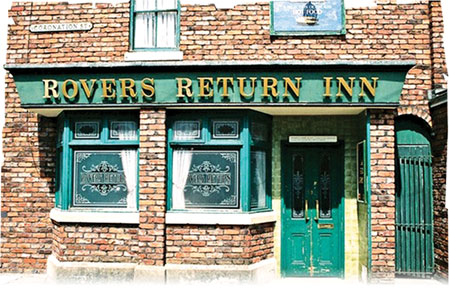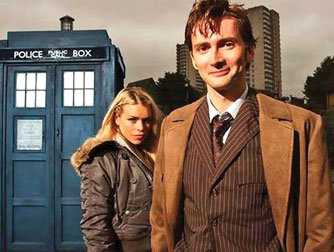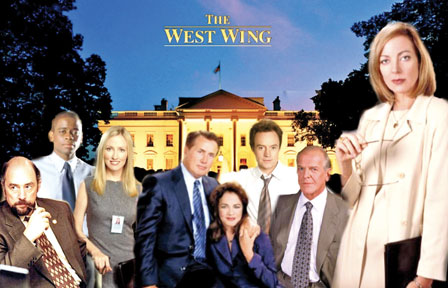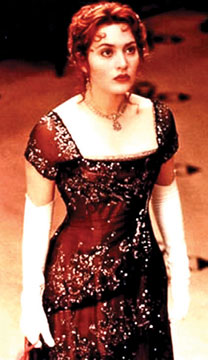Social Realism in Literature
By Madelene WIGHTMAN
 A couple of weeks ago, I delivered a lecture on Social realism in
literature at the Institute for Cultural and Ethnic Studies. The talk
opened a number of lively discussions around the topic. The purpose of
this article is, in the first instance, to outline the lecture for those
who did not attend. A couple of weeks ago, I delivered a lecture on Social realism in
literature at the Institute for Cultural and Ethnic Studies. The talk
opened a number of lively discussions around the topic. The purpose of
this article is, in the first instance, to outline the lecture for those
who did not attend.
Secondly, to address and clarify some of the misconceptions which
occurred during the lecture. Thirdly, to add some other important points
which I did not expand upon during the lecture due to time constraints.
When studying Social realism in literature, it is important to first
clarify the difference between Socialist Realism and Social Realism as
the terms are so close.
Socialist Realism is the school of realist art that had as its end,
the furtherance of goals of socialism/communism. It held that successful
art should depict and glorify the proletariat's struggle toward social
progress. Socialist Realism became the officially approved form of art
of the Soviet Union. Since all means of production belongs to the state,
so did art (as it was a powerful means of propaganda). The tendencies
toward Socialist Realism began in the late 19th century. Maxim Gorky's
novel Mother is considered to be the first true work of Socialist
Realism. By modern standards, it was a pretty awful piece of literature!
Social Realism, however, is not an official art and so allows
subjectivity. It was originally an artistic movement that depicts the
daily struggles of the working class.
Social Realism verses Critical Realism

The principal source of the subject matter of works of Social Realism
is made up of problems linked with life, the work, thoughts and actions
of the people who are either trying to construct a socialist society or
who are struggling for their rights in capitalist, rather than
socialist, countries.
Social Realist literature does not depict people from a Critical
Realist perspective. Critical realism puts oppressed and exploited
people at the centre of its works, people for whom we must have pity,
people who rebel only as individuals, those who are incapable of
changing their lives and of building a new society. The literature of
Social Realism, however, portrays the people as a great, organised
force; the creative and moving force of history. This literature shows
that the broad masses are those who play the decisive role in historical
events. The movement developed largely as a reaction against
Romanticism.
The Romantics
The Romantics were ambivalent towards the "real" social world around
them. They were often politically and socially involved, but at the same
time they began to distance themselves from the public. High Romantic
artists interpreted things through their own emotions, and these
emotions included social and political consciousness, one that reacted
strongly to oppression and injustice in the world. So artists sometimes
took public stands, or wrote works with socially or politically oriented
subject matter. Yet at the same time, another trend began to emerge, as
they withdrew more and more from what they saw as the confining
boundaries of bourgeois life.
In their private lives, they often asserted their individuality and
differences in ways that were to the middle class a subject of intense
interest, but also sometimes of horror. ("Nothing succeeds like excess,"
wrote Oscar Wilde, who, as a partial inheritor of Romantic tendencies,
seemed to enjoy shocking the bourgeois, both in his literary and life
styles.) Romanticism affirms intuition and other modes of knowledge as
equal or better.
Scientific also assumes the principle of progress through science.
Philosophically this belief may be underpinned by empiricist or
mechanical materialist thought. Social critical policy and Social
Realism embodies the tension between technocracy and populism and
between scientific and romantic criticism.
Short history of Social Realism
 George Eliot's Adam Bede is an example of Victorian literature aiming
to reflect Social Realism. As you will be aware, Victorian society was
rigid in many ways, including having a bias against women. A woman
seeking to move freely in the world of employment was often mocked and
ridiculed. Females were expected to work in the house and live in
confined circles. In this novel George Eliot represented a character
called Dinah Morris who was a Methodist preacher. When she becomes a
preacher, she is indirectly ridiculed and criticised by the community.
Yet Dinah Morris is beautiful in appearance and people listen to her
preaching as they are attracted to her. George Eliot's Adam Bede is an example of Victorian literature aiming
to reflect Social Realism. As you will be aware, Victorian society was
rigid in many ways, including having a bias against women. A woman
seeking to move freely in the world of employment was often mocked and
ridiculed. Females were expected to work in the house and live in
confined circles. In this novel George Eliot represented a character
called Dinah Morris who was a Methodist preacher. When she becomes a
preacher, she is indirectly ridiculed and criticised by the community.
Yet Dinah Morris is beautiful in appearance and people listen to her
preaching as they are attracted to her.
It soon becomes apparent that the congregation only go to listen to
her because they want to see her face. Many of those attending Dinah
Morris's preaching were hypocritical, under the mask of religious
devotion. Eliot was very much concerned with moral issues in the novel
Adam Bede in the sense that morality is such ladder from which man can
lead to the better life. Eliot didn't believe in art for art's sakes but
in art for morality's sake. She spoke especially about virtue and vice.
Virtuous characters should be rewarded for their moral conduct and
who have moral weakness was followed by punishment and suffering.
Danish writer, Georg Brandes, was an influential Danish literary
critic. His interpretations of such writers as Henrik Ibsen, were
credited with bringing Scandinavian literature into mainstream European
culture. 'A Doll’s House' by Henrik Ibsen showed how hardship
aged/changed Christine Linde, who having just returned to her hometown,
tells Nora all about her unfortunate life. Married without love, and
widowed for the past three years, Christine experiences the hardships of
a woman who was forced to make her own way. She has independently faced
life's challenge, although she too sought protection by marrying for the
sake of financial convenience. Her harsh experience as a widow who was
forced to earn her own livelihood stands in sharp contrast to the
insulated and frivolous life which Nora leads. Having learned, (through
suffering), the value of truthful human relationships, Christine is the
first person to recognize that Nora's marriage is based on deception.
This early Social Realist novel, which shows women’s suffering
through Nora and Christine, reveals the true impact of people such as
Torvald. It shows the lack of serious relationships in marriages and how
appearances were more important than substance. Naturally there were
numerous other early Social Realist novels produced around this time by
many people. Yet a study into these for the purpose of this article
would be redundant.
 At this point in the original lecture, I introduced early Sri Lankan
Social Realist novels. However, that topic deserves a whole feature
dedicated to it and I do not wish to do any injustice to the movement or
the authors by trying to include it in this short feature. At this point in the original lecture, I introduced early Sri Lankan
Social Realist novels. However, that topic deserves a whole feature
dedicated to it and I do not wish to do any injustice to the movement or
the authors by trying to include it in this short feature.
Why is a historical study of Social Realism in Literature even
relevant today? Is it not completely outdated as a movement?
This is a good question and one which, I am sure, some of the
attendees at my recent lecture asked themselves. It is interesting to
remember that that originally people were outraged by Social Realism in
Literature. This meant that at that time it was a ‘hot topic’/’new and
daring, movement’ and was easily distinguishable from the previous types
of allegorical story telling.
However, today in all modern societies, Social Realism is so
intrinsic to our story telling that we have, perhaps, ceased to
recognise it for what it is! Most, if not every, developed society on
earth has its favourite soap operas. Examples include 'Coronation
Street' and 'Eastenders' (UK), 'Neighbours' and 'Home and Away'
(Australia), 'CSI' or 'The West Wing' (USA) to name just a few. Latin
America, The Gulf States and South Asia all have numerous TV dramas and
soaps, which depict one reality. That is to say that none of these
stories show all realities, nor can they depict the subjective reality
of every individual who lives in a similar environment to that of the
characters. However, the fact remains that millions of people tune into
these programmes every day and relate deeply to the characters.
‘Some series, such as ‘CSI’ or ‘The West Wing’ portray a reality that
is actually so far removed from our immediate experience that we stop to
ask if this too, really is Social Realism. I would argue that it is,
given that the series’ seek to portray that which is, for certain
sectors of society, a reality. 'The West Wing’ is based on real
experiences of White House staff and presents an inside view of some of
the dilemmas faced by US Presidents and their staff. CSI, Waking the
Dead (UK) and numerous similar crime and forensic police dramas
represent a real process. These are areas of expertise which the average
person knows little of, yet these programmes portray the reality of a
process that is also a personal reality for those involved in this
process.
|

A scene from Titanic |
Again, what are Hollywood Blockbusters if not works of Social
Realism? What makes them blockbusters and why do people go to see them
time and again, remembering their stories for years? It is undoubtedly
because the masses see something in these films which speaks deeply of
their own lives, or their hopes, dreams, doubts and anxieties. The
reason they are universally popular in a way that other films are not is
that they speak to a lot of people in a lot of different ways. Less
popular, successful films speak to a smaller group of individuals; i.e.
they only to portray a couple of different realities.
As I have been writing this, I have asked myself why Steven
Spielburg’s Blockbuster ‘Titanic’ was so popular and is shown on UK TV
every Christmas. I had an acquaintance who once told me he had seen the
film 17 times! There are clearly elements of the film that speak to
people deeply. It could be that people enjoy watching a disaster
unfolding with horrified fascination. After all, the sinking of the
Titanic really happened and most of us can’t imagine the depths of
suffering involved in the prospect of dying on a so called ‘unsinkable
ship’. It is a Social Realist piece of ‘art’ first and foremost because
it is about a real disaster.
Another way in which the film is socially realist is that it speaks
of the huge division between rich and poor/ the privileged and
underprivileged in Britain and America in the early 1900s. Yet another
major element that appeals to people from every society is the love
story. Personally, this was the part of the film that I found least
convincing. After all, there was such a huge division between steerage
and first class that in reality, the two would never have met. Yet it is
perhaps the highly unlikely element that appeals to people so much. It
is the idea that maybe somebody somewhere is experiencing this kind of
unlikely situation; the audience wonder if this rather magical event
actually reflects somebody’s reality. What is most unlikely is that
buried deep in the human psyche is the hope, longing and belief that
true love prevails and overcomes all obstacles. We deeply believe this
to be a true possibility, so when it appears on screen, it confirms this
belief.
Where does Science Fiction fit into Social Realism?
There are two types of Science Fiction, one which bears no relation
to Social Realism and one which does. The first category of Science
Fiction is myth-making. This includes stories such as Star Wars, the
Green Lantern, Star Trek, Stargate, Battlestar Galactica (which is
essentially about religion) to name only a handful. Obviously,
myth-making science fiction has little or no relationship to Social
Realism. However, the other type of science fiction is
dystopian.Dystopian fiction is, in some respects, related to realism. It
is one of those places where lines become blurred. This is because
almost all deal with those things which are theoretically possible
(though unlikely) in the future. They also feature possible future
societies, where humans can live forever or where cyborgs have replaced
us. Early examples of this are Brave New World (Aldous Huxley, 1932),
1984 (George Orwell, 1949), A Clockwork Orange (Anthony Burgess novel,
1962)/Stanley Kubrick film.
‘Dr Who’ is an obvious example of Social Realism blended with
Dystopic Sci-Fi which has been running from the 1960s to the present
day. The Doctor’s assistants are typically living satisfactory, yet
rather mundane lives in London before he finds them. Behind the mundane
are aliens living with the human race and a Time Lord who looks like a
(rather handsome) man, yet travels through time and space and who loves
the human race. I would suggest that this is the key to the success of
the story; the mixture of what is essentially Social Realist soap with a
large dose of Dystopic Sci-Fi thrown in for good measure.
“Virtual Realism”?
It has been suggested that Social Realism is now firmly in the past
and as such, bears no relation to the art, literature or film of today.
The same people suggest that “Virtual Realism” has, in fact, replaced
it. I assume that this refers to the brand of Dystopic Sci-Fi that I
have mentioned above. However, I would suggest that this brand of
story-telling only appeals to a small sector of the population. I also
believe that the success behind it lies in the element of Social Realism
found within it. For example, the reason ‘Dr Who’ has enjoyed new found
success is largely due to the fact that the assistants keep falling
passionately in love with a ‘man’ that they can’t have. This is
something that most people can relate to and is therefore Socially
Realist.‘The Terminator’ and its off-shoot (‘TheSarah Connor
Chronicles’) are yet another example of this. Although they are
futuristic tales of a possible global take-over by Skynet (possible but
unlikely), they are about the plight of a few human beings burdened with
what seems like an impossible task. Need I say more about the connection
with Social Realism?
Conclusion
Far from being dead, buried and irrelevant, I believe that Social
Realism in Literature continues to thrive and that it will last the
course. I think that it will outlive Magical Realism, Dystopic Sci-Fi,
Allegory and everything in between. This is because essentially it
continues to be the means by which we explore our lives and tell our
personal stories. It is the means by which we relate to others who
superficially we appear to have nothing in common with. It is also the
means by which we examine our hopes and fears and understand our motives
and new possibilities for ourselves. Only Social Realism in Literature
and film can achieve this in ways that none of the other genres
mentioned here are able to.
|

